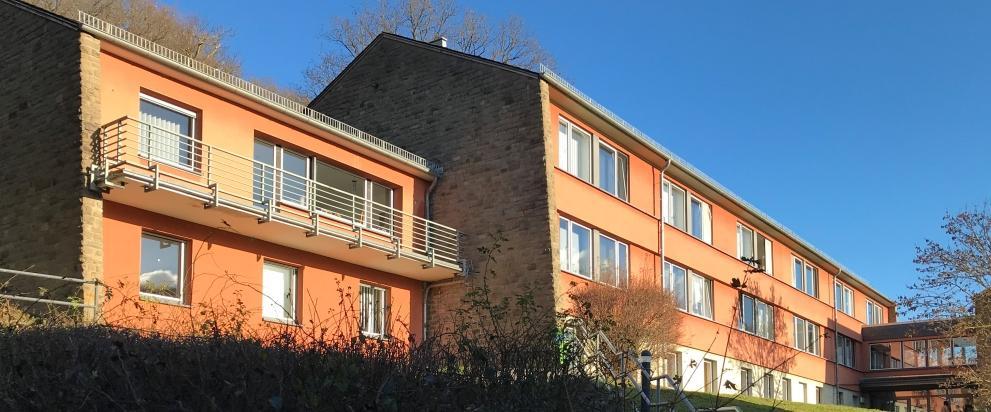University of Justice of North Rhine-Westphalia, Bad Münstereifel
Heat reconnected – in the old structure
Energy reimagined — for a traditional training centre: The University of Justice of North Rhine-Westphalia has been an integral part of judicial training in the public sector since 1976. The property consists of eight buildings, most of which were built in the 1950s, with a gross floor area of around 11,100 m². The first energy efficiency improvements were made back in the late 1980s, including façade insulation and replacement of windows. Today, the property is used for everything from accommodation, lecture halls and administration to a canteen and kitchen. There are also plans for a sustainable new building that meets the ‘Efficiency Building 40’ standard – as an extension of the campus and a catalyst for the overall energy renovation.
On behalf of BLB NRW (Aachen branch), MorgenGrün carried out a comprehensive energy analysis of the entire property. The focus was on viable concepts for a modern, climate-friendly heat supply – especially in conjunction with the planned new EG-40 building.
The result: clear options for a cross-building supply, accompanied by specific recommendations for the renovation of the existing buildings. These include measures to the building envelope as well as technical modernisations – for example, to increase the efficiency of the building services.
Energy analysis with a view to economic efficiency and the future
All proposed measures were not only evaluated in terms of energy efficiency, but also in terms of cost-effectiveness and amortisation. Particularly effective: insulating unheated roof and basement areas with mineral wool insulation boards and replacing outdated, energy-intensive ventilation systems.
Based on careful on-site inspections and empirical values from building physics, our engineers were able to make precise statements about the substance and energy status of the building – an important basis for the future viability of the location.
From individual case to role model
The results show that, depending on the building, the recommended measures can reduce CO2 emissions from energy consumption by up to 90%. This is a major step forward for the climate strategy of public educational institutions – and a model that can be applied to similar properties.
We are proud to have provided a sound basis for decision-making with this work, combining ecological responsibility with economic rationality – and thus enabling real progress.
